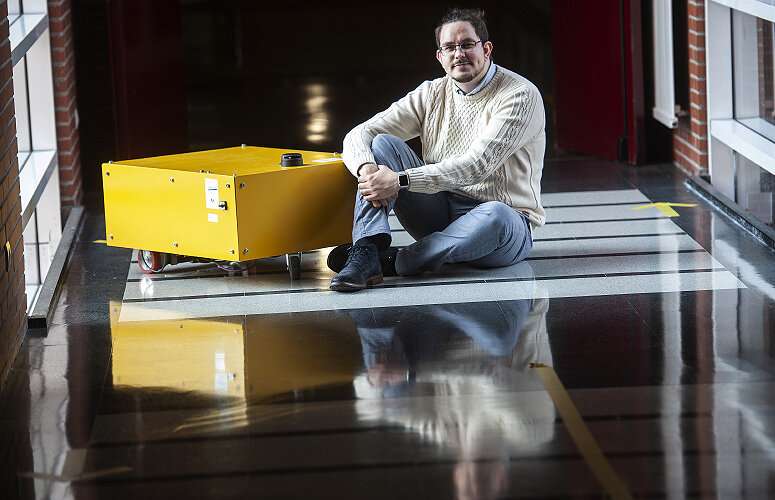Credit: University of the Basque Country
The Ph.D. thesis by Daniel Teso-Fernández de Betoño of the UPV/EHU Faculty of Engineering in Vitoria-Gasteiz has resulted in a mobile, collaborative platform capable of performing tasks in motion at the Mercedes-Benz plant in the capital of Alava. The research opens up a new field for improving the ergonomics of these workstations and for the robot and human to collaborate by performing tasks together.
The idea of collaborative robotics with autonomous navigation to perform screwdriving tasks in motion emerged at the Mercedes-Benz plant in Vitoria-Gasteiz. To develop his Ph.D. thesis, Daniel Teso-Fernández de Betoño sought to investigate, develop and implement an adequate, efficient technology within the lines of work, and which would cooperate with the workers.
On the Mercedes-Benz final assembly lines, the vast majority of tasks require manual operations. It is also an area where everything is in motion, which means that not all types of people can opt to work in these spaces.
Within the thesis produced by Daniel Teso, the research and development of a platform that follows the movement of the vehicle that is being worked on was essential. That avoids having to stop the assembly processes. Collaborative robotic technology and the mobile platform have been widely developed by large companies, but until now none of them operate while in motion. In other words, collaborative robots move to a workstation, the mobile platform is brought to a halt and the robot's work begins.
The project includes two different pieces of research: firstly, the development of an AMR (Autonomous Mobile Robot) prototype using autonomous navigation is shown, and secondly, specific tooling is presented for Mercedes-Benz. AMRs are powerful mobile platforms that use autonomous indoor navigation to move around any known area. At the Faculty of Engineering in Vitoria-Gasteiz, such a platform was designed to develop location algorithms. In turn, work was carried out using an AMR and a collaborative robot, both commercial ones, inside the facilities of the Mercedes-Benz plant in Vitoria-Gasteiz. The development was used to work on the efficiencies of the workstations in which the robot was supposed to move, position itself and perform quality work in constant motion.
The work concluded with the creation of a prototype inside Mercedes-Benz using technology available on the market, but with algorithms developed in the thesis, which allow screwdriving tasks to be performed while in motion. The prototype is able to self-reference with the vehicle on which it is going to work and thus gradually correct the movement of the mobile platform to follow it and, in turn, make small corrections to the robot's positioning until the desired task has been completed.
The thesis was defended in December and the prototype has now been presented at the facilities of the Final Assembly Laboratory Factory, which is the innovation space where Mercedes-Benz tests new facilities and technologies prior to their entry into production. The thesis was supervised by Prof Ekaitz Zulueta and co-supervised by Javier Gómez-Hidalgo at the car manufacturer.
The work has resulted in the publication of 11 articles, three of which deal specifically with mobile platforms. Furthermore, there are two invoking projects up and running on the basis of it. An Hazitek project, in collaboration with Mercedes-Benz, and an Elkartek project, which aims to innovate in the field of artificial intelligence.
More information: Daniel Teso-Fz-Betoño et al. Piezoelectric Energy Harvesting Controlled with an IGBT H-Bridge and Bidirectional Buck–Boost for Low-Cost 4G Devices, Sensors (2020). DOI: 10.3390/s20247039
Aitor Saenz-Aguirre et al. Kharitonov Theorem Based Robust Stability Analysis of a Wind Turbine Pitch Control System, Mathematics (2020). DOI: 10.3390/MATH8060964
Daniel Teso-Fz-Betoño et al. Semantic Segmentation to Develop an Indoor Navigation System for an Autonomous Mobile Robot, Mathematics (2020). DOI: 10.3390/MATH8050855
Aitor Saenz‐Aguirre et al. Performance enhancement of the artificial neural network–based reinforcement learning for wind turbine yaw control, Wind Energy (2019). DOI: 10.1002/we.2451
Provided by University of the Basque Country






















